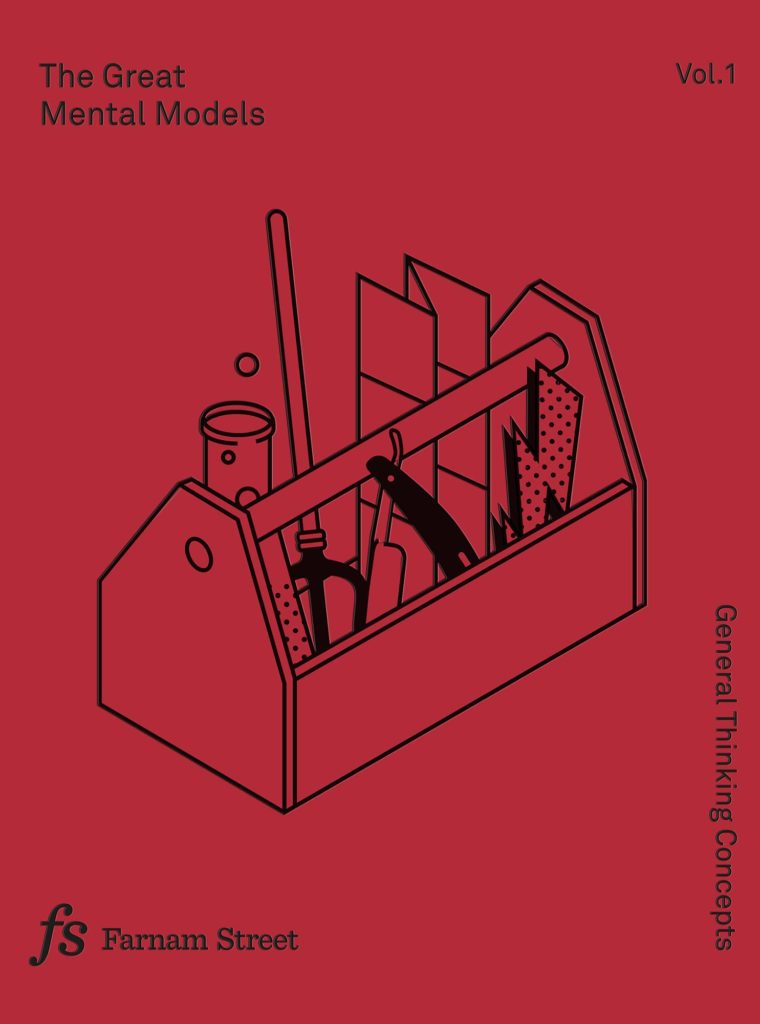The Great Mental Models vol.1 summary

Book: The Great Mental Models vol. 1 by Shane Parrish
Mental models are representations of how the world works, and this volume focuses on avoiding mistakes, identifying reliable knowledge, solving problems, and forecasting.
This book series help to be less wrong, less often, and with fewer consequences. A must-have in fields that put a huge penalty on mistakes, like investing. However, in fields usually more tolerant to mistakes, like entrepreneurship, this is less vital.
Main ideas:
Avoid mistakes
The map is not the territory: know the limits of your mental tools
- A map is a necessarily reduced representation of a complex territory.
- It’s useful to make some predictions.
- But you need to be aware of the limitations of your maps.
Circle of competence: stay in it
- Define the boundaries of your knowledge to avoid making decisions in areas you’re not enough knowledgeable.
- Your circle of competence is the field you studied most of your life, in which you have a long history of successful decisions taken pretty fast and with high confidence, and in which you know quite precisely what you don’t know and what can’t be known.
- Watch out for the shallow, basic knowledge that often gives the illusion of competence.
Acquiring wisdom: change your perspective, accept constructive critics, and get closer to the consequences
- First challenge: perspective. Our context, beliefs, and point of view limit us.
- Second challenge: ego. We fear being criticized.
- Third challenge: distance from consequences. We correct ourselves faster when we burn ourselves than when we see others burning themselves.
Identifying reliable knowledge
Falsifiability: the first step to real knowledge
- Falsifiability is a characteristic of a statement meaning that we can prove or disprove if it’s true.
“I have a shirt in my suitcase” is a falsifiable statement, because we can open the suitcase, and check if it’s true or false. - “God exists” is an unfalsifiable statement, because there is no way to tell if it’s true or not by direct observation.
- A theory must be falsifiable to be scientific. And then experimentation allows to confirm or deny if this theory was true.
- Unfalsifiable theories are not real knowledge. You can’t rely on unfalsifiable theories to make predictions. They are wishful thinking.
Correlation does not imply causation
- Correlated things may or may not be linked.
- Even if they are really linked, we don’t know which one is causing the other, and maybe they are actually connected to a third thing.
- Student pot smoking is correlated with bad academic results. We might intuitively think that pot may have a negative effect on results. But having bad results can also actually be the cause for smoking pot. Or the two might reinforce each other. Or maybe a third element, like their general unhappiness in life, is the cause of both of these things. Low happiness can come from a variety of factors.
- The real links, causations, are sometimes harder to discover and they may be highly dependant on the individuals.
- Therefore, we must be prudent when we discover a correlation. Correlation is only the first step before a scientific experiment to determine the real links if there are any.
Solving problems
First-principles thinking: Going back to fundamentals
- Going back to fundamentals to find better ways to solve a challenge.
- Questions to ask yourself:
- Why do I think that?
- What exactly do I think?
- How do I know this is true?
- Can I list the opposing arguments?
- What are the sources and pieces of evidence?
- What might others think?
- How do I know I am correct?
- What if I am wrong?
- What are the consequences if I am?
- Why did I think that in the first place?
- Was I correct?
- What conclusion can I draw from the reasoning process?
Thought experiment
- Try to anticipate in your head the outcome of an experiment, with as much rigor as possible.
- It allows you to detect the limits of your circle of competences
Forecasting
Second-order thinking: anticipate the chain of consequences
- It helps focus on long-term benefits, and also to construct better arguments
Probabilistic thinking: evaluate the probability of all possible outcomes
- Instead of trying to forecast what will be the future, evaluate the probability of all possible futures.
- You need to identify what matters and check your assumptions.
Handling uncertainty
Inversion: avoid the things that lead to what you don’t want
- When there are too many possibilities and a lot of uncertainties, explore all the situations you don’t want.
- List how you might end up in them, and list what to avoid doing.
- Don’t try to be brilliant, try to avoid mistakes.
Occam’s Razor: Simple explanations are usually better
Hanlon’s Razor: incompetence, not malice
- Never attribute to malice that which is adequately explained by stupidity.
- Laziness, incompetence or bad incentives are more often the cause of problems than bad intentions.
Necessity and sufficiency
- Buying a lottery ticket is necessary but not sufficient to win.